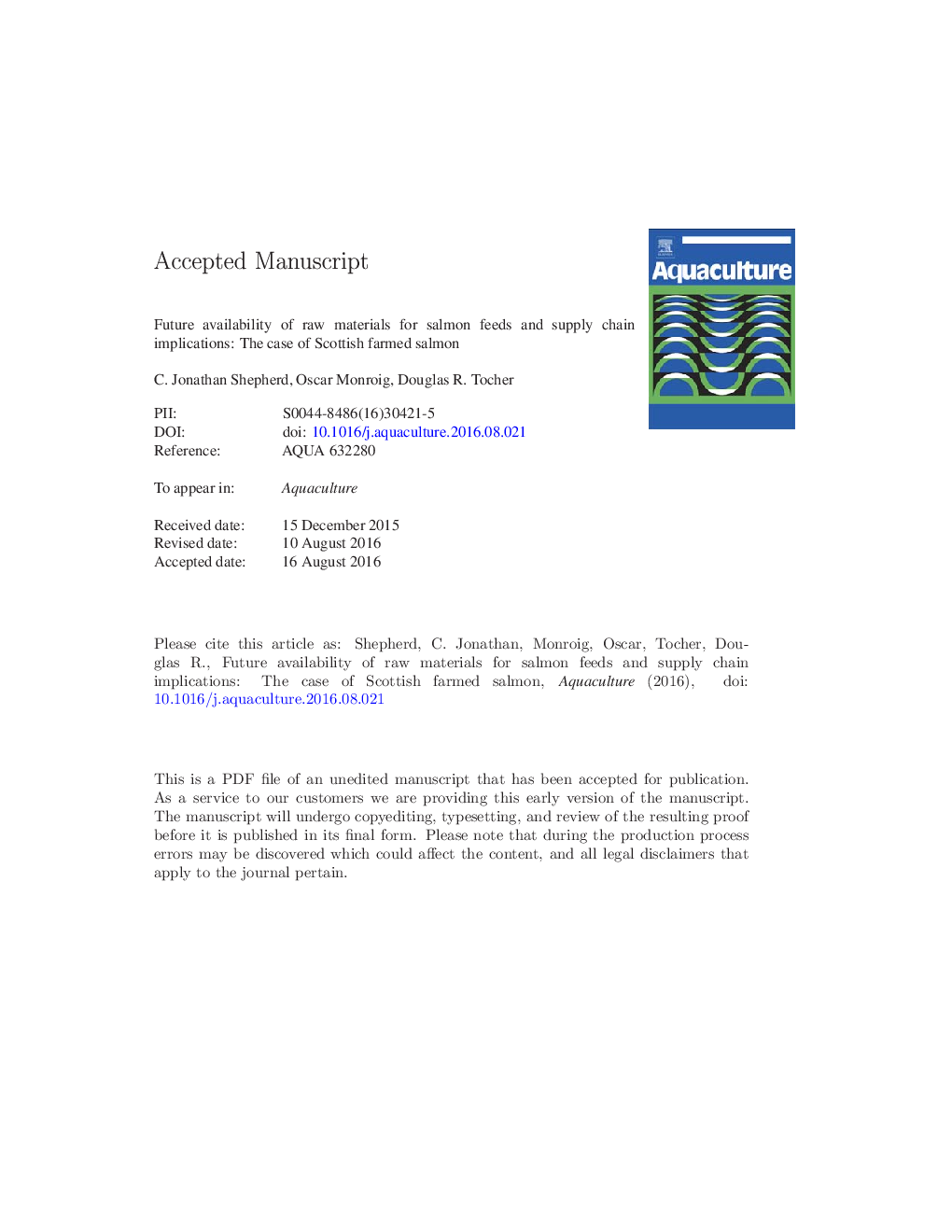| کد مقاله | کد نشریه | سال انتشار | مقاله انگلیسی | نسخه تمام متن |
|---|---|---|---|---|
| 5539514 | 1552820 | 2017 | 42 صفحه PDF | دانلود رایگان |
عنوان انگلیسی مقاله ISI
Future availability of raw materials for salmon feeds and supply chain implications: The case of Scottish farmed salmon
ترجمه فارسی عنوان
در دسترس بودن آینده مواد خام برای خوراک ماهی قزل آلا و اثرات زنجیره تامین: مورد ماهی قزل آلا تولید شده در اسکاتلند
دانلود مقاله + سفارش ترجمه
دانلود مقاله ISI انگلیسی
رایگان برای ایرانیان
کلمات کلیدی
موضوعات مرتبط
علوم زیستی و بیوفناوری
علوم کشاورزی و بیولوژیک
علوم آبزیان
چکیده انگلیسی
The current range of Scottish salmon feeds is adapted to a differentiated supply of salmon products, including differing omega-3 content, differing content of marine raw materials, etc. The progressive replacement of marine feed ingredients by plant proteins and oils is reducing the content of omega-3 long-chain polyunsaturated fatty acids (LC-PUFA). However the benefits are a more secure and less volatile raw material supply, together with environmental feed contaminants at low or undetectable levels in the resulting salmon product. There is widespread adoption of standards and certification schemes by Scottish salmon farmers and feed suppliers in order to demonstrate environmental sustainability. This has focused in particular on use of certified ingredients from sustainable supply sources ('responsible sourcing'). Future volume estimates of Scottish salmon production, hence feed requirements, are insufficient to threaten raw material supply compared with global markets, although it is argued this is likely to involve greater use of locally grown plant proteins and an increased proportion of fishmeal manufactured from by-product trimmings (derived from processing fish for human consumption). However, UK retail chains will remain reluctant to allow salmon suppliers to utilise land animal by-products due to negative consumer perceptions, with resulting implications for formulation cost and flexibility. Given its world-wide scarcity, the main strategic concern relates to future availability of sufficient omega-3 LC-PUFA, in particular eicosapentaenoic acid (EPA) and docosahexaenoic acid (DHA), in order to maintain the healthy image of Scottish salmon. To maintain its longer-term reputation and product benefits, the Scottish industry may need to consider adopting a more flexible attitude to using new alternatives to fish oil (e.g. EPA and DHA derived from transgenic oil seed crops, when commercially available). It is concluded that Scottish salmon farming is a successful example of sustainable feed development and the industry can be confident that the changing raw material base will support continuing production of high quality, healthy farmed salmon, but the long-term security of supply of omega-3 LC-PUFA remains an issue.
ناشر
Database: Elsevier - ScienceDirect (ساینس دایرکت)
Journal: Aquaculture - Volume 467, 20 January 2017, Pages 49-62
Journal: Aquaculture - Volume 467, 20 January 2017, Pages 49-62
نویسندگان
C. Jonathan Shepherd, Oscar Monroig, Douglas R. Tocher,
